PRB Tech Notes: New Plant/Old Plant: Are We Applying What We’ve Learned?
In the last issue of COAL POWER, I urged readers to give coal handling the priority it deserves. The coal yard warrants as much attention as boilers and combustion systems, turbine-generators and auxiliaries, and postcombustion emissions control — the other three "zones" within the plant perimeter — because it is an equally valuable business unit.
Last time, I made the case for increased investment in the coal yards of existing plants to maximize their efficiency, cleanliness, and safety. Do the coal yards and coal-handling systems of plants still on the drawing board deserve similar treatment, and are they getting it from designers? Yes and (sadly) no, respectively. The inequity must be addressed because even if TXU, under a new owner, severely cuts back the new coal-fired capacity it had envisioned for eastern Texas, other utilities still plan to build several dozen new plants elsewhere in the U.S.
The rationale for upgrading coal handling at existing plants applies equally well to new plants. But based on my discussions with utilities and plant designers, much more time and money are being spent on boilers, turbines, and pollution control than on coal yards. For many new plants, coal-handling equipment and systems are incorporating technology that may be two or three decades old.
Different Strokes
Why haven’t plant designers and their utility customers embraced newer, better, and equally proven coal-handling technologies? Aren’t the lessons learned from operating existing plants applicable to the design of new plants? They are applicable, but designers haven’t applied them for a variety of reasons.
Here are four:
-
The utility department that oversees the work of engineering, procurement, and construction (EPC) firms often does not insist on improving coal handling.
-
EPC firms have different goals and requirements than plant operators. For example, designers want to minimize a plant’s capital cost, so they largely ignore the O&M cost consequences of using antiquated technology for all plant processes, including coal handling. By contrast, utilities would like their new plants to have the lowest possible O&M costs and be operable by the fewest number of people — as long as reliability isn’t compromised.
-
To maximize their profit on a fixed-cost contract, EPC firms would rather replicate a standardized design — a reference plant. But extracting design details wholesale from an old project and incorporating them into a new one only serves to perpetuate inefficient and less-than-cost-effective designs and practices.
-
The long timeline of project permitting inherently encourages the specification of mature technologies, to the disadvantage of new (but proven) technologies. Older technologies and equipment may not be in the best interest of the plant operator, from either a cost or safety standpoint. For this reason, it’s imperative for a utility to be confident that the air quality equipment required for a new plant’s coal yard meets state regulations prior to deploying it.
Avoiding Obsolescence
How does one prevent specifying equipment for a new plant’s coal yard and coal-handling systems that isn’t best in class because it is technologically dated? The answer is revealed by examining where the most attention has been paid to upgrades of existing coal yards.
Although recent years have brought significant advancements in coal crushers and conveyor belts and drive systems, in my view plant operators seem have spent the lion’s share of their time and effort trying to limit coal dust and the safety problems it causes. Following are the systems they’ve focused on upgrading, and the new technologies that have been developed in each area.
Transfer chutes. This class of coal yard equipment (Figure 1) has enjoyed some of the greatest gains in efficiency and efficacy of all categories of coal-handling gear. Current-generation transfer chutes spill and emit less dust than their predecessors without add-ons (reducing cleanup costs); they require no skirts, seals, or impact cradles (reducing O&M costs); and they "hang up" less (reducing dangerous buildup inside the chute).
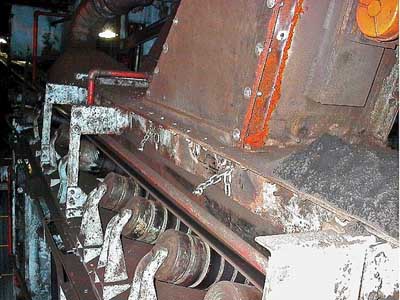
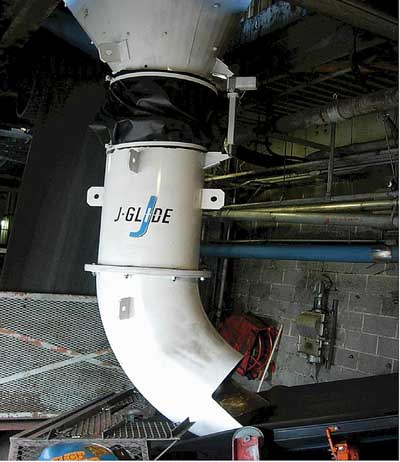
1. Thirty-year-old transfer chute technology (top) compared with a modern design (bottom). The difference in cleanliness is obvious. Courtesy: PRBCUG
Dust collection systems. The designs of both pulse-jet and reverse-air technologies for collecting dust have made great strides as well. The latter, due to its round design, is preferred for plants burning friable Powder River Basin (PRB) coal. Many plants I have visited have replaced their rotoclones with either wet dust extractors or dry filter collectors (Figure 2). Most have been installed in the tripper/cascade or silo/bunker fill area of the plant.

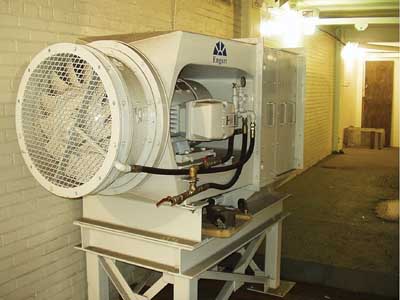
2. Typical dry (top) and wet (bottom) dust collection systems. Courtesy: PRBCUG
Dust suppression systems. Most plant designs incorporate a dust suppression system (Figure 3) because Clean Air Act Title V requires it. Without such a system, the plant would not be issued an air quality permit. In my opinion, the best insurance against exposing a plant to air quality violations and incurring excessive maintenance costs for a dust suppression system is to choose an experienced supplier known for ongoing service support.
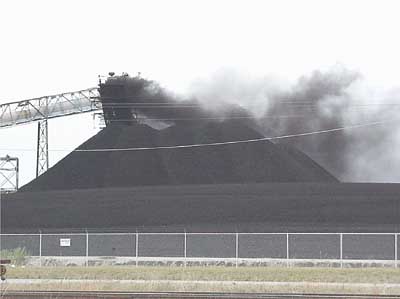
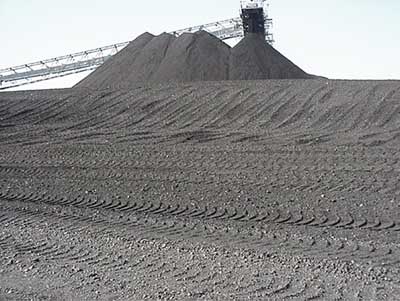
3. Similar-size coal piles without (top) and with (bottom) dust suppression. Courtesy: PRBCUG
Fire protection systems. This history lesson is a simple one. Learning it requires answering just one question: Is your new fire protection system being designed by someone with or without experience on coal-handling equipment? Preventing coal dust fires is a lot harder than preventing fires in buildings.
Because the effectiveness of coal yard equipment and coal-handling systems has a big impact on a plant’s costs and safety and environmental record, it’s imperative that your designer share your goals.
Washdown systems. Even the latest and most effective coal-handling systems need to be followed by an effective final touch-up cleaning. Your choice of automated or manual washdown should depend on your staffing level.
Do Your Homework
Minimizing the capital cost of a new coal-fired plant is just as important to its owner as to its designer. But capital cost considerations should not obscure the owner’s desired result of the design process: a plant that remains safe and environmentally compliant and operates at minimum O&M costs.
To achieve these goals, I’d give project developers the same bit of advice I’d give a student seeking a diploma: Do your homework. Because the effectiveness of coal yard equipment and coal-handling systems has a big impact on a plant’s costs and safety and environmental record, it’s imperative that your designer share your goals. Here are some tips for ensuring that that’s the case:
-
Incorporate feedback from operators of your existing plants into the choices of technology for your new plant.
-
Know for certain — before you apply for an air quality permit — whether the dust collection and suppression technologies you’ve chosen will make your plant environmentally compliant.
-
Ask your EPC how its design of your new conveyor system will address spills and dusting.
-
If your design is based on a reference plant, visit an operating unit of that design. Thoroughly review its performance and ask its operators whether they would have designed anything differently.
-
Short of demanding a detailed list of vendors and equipment to be specified, insist that your EPC summarize the credentials and experience of prospects. Vendors should have at least five years’ experience in coal-fired generation, at least 15 customers, familiarity with the type of coal to be burned, and a good track record of after-sales support. Any equipment to be specified should have 30 units currently in service at coal-fired plants as well as a record of low O&M costs.
Many EPCs still consider the coal yard and coal-handling equipment somehow less important than boilers, turbines, and pollution control system. As a result, they believe that specifying advanced dust collection and suppression systems adds unnecessary dollars to a project’s cost.
Make them defend that belief with hard numbers. Remember, the design stage is the point at which advanced products can be incorporated into a new plant at the lowest cost. In most cases, spending a little more up front for a top-notch piece of coal-handling equipment is a smart move. Doing so can avoid getting stuck with a system that must be replaced within a few years, costs an arm and a leg to operate and maintain, or both.
Burn PRB Coal? Learn How to Do It Better by Joining the PRBCUGThis year’s annual meeting of the Powder River Basin Coal Users’ Group will be held in Chicago at ELECTRIC POWER 2007 (www.electricpowerexpo.com) May 1–3. Last year’s meeting in Atlanta drew more than 320 staffers of gencos, vendors, and consultants. Interested in joining up? It’s easy—just click www.prbcoals.com and then click on "Membership." Among the benefits that membership affords are the chance to share lessons learned with your peers and the opportunity to join a subcommittee dealing with an issue dear to your heart (electrical classification, fire protection and risk management, fuel handling, boiler performance and combustion, to name just a few). The PRBCUG’s web site is your one-stop source for all things PRB. It was recently redesigned and augmented with tons (pun intended) of valuable and exclusive information—including a constantly updated database of plant consumption and a list of plants considering converting to PRB coal. |